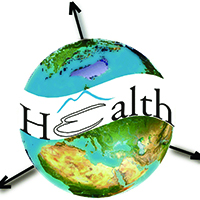Spatial epidemiology and meteorological risk factors of COVID-19 in Fars Province, Iran

Accepted: 19 April 2022
HTML: 18
All claims expressed in this article are solely those of the authors and do not necessarily represent those of their affiliated organizations, or those of the publisher, the editors and the reviewers. Any product that may be evaluated in this article or claim that may be made by its manufacturer is not guaranteed or endorsed by the publisher.
Authors
This study aimed at detecting space-time clusters of COVID-19 cases in Fars Province, Iran and at investigating their potential association with meteorological factors, such as temperature, precipitation and wind velocity. Time-series data including 53,554 infected people recorded in 26 cities from 18 February to 30 September 2020 together with 5876 meteorological records were subjected to the analysis. Applying a significance level of P<0.05, the analysis of space-time distribution of COVID-19 resulted in nine significant outbreaks within the study period. The most likely cluster occurred from 27 March to 13 July 2020 and contained 11% of the total cases with eight additional, secondary clusters. We found that the COVID-19 incidence rate was affected by high temperature (OR=1.64; 95% CI: 1.44-1.87), while precipitation and wind velocity had less effect (OR=0.84; 95% CI: 0.75-0.89 and OR=0.27; 95% CI: 0.14-0.51), respectively.
How to Cite

This work is licensed under a Creative Commons Attribution-NonCommercial 4.0 International License.
PAGEPress has chosen to apply the Creative Commons Attribution NonCommercial 4.0 International License (CC BY-NC 4.0) to all manuscripts to be published.

 https://doi.org/10.4081/gh.2022.1065
https://doi.org/10.4081/gh.2022.1065




